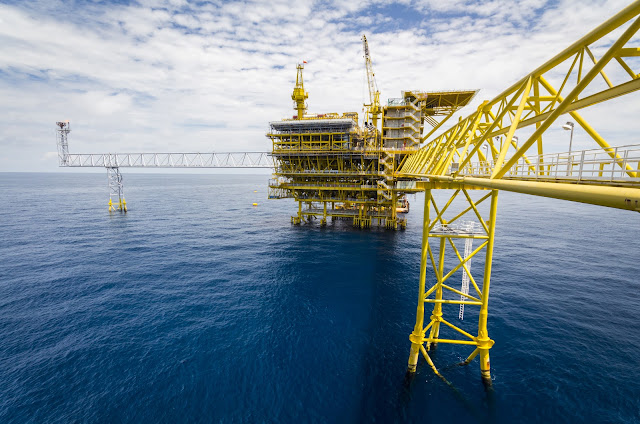 |
| Offshore Decommissioning |
Offshore decommissioning is an intricate process that involves retiring
and removing aging oil and gas infrastructure located in offshore fields. As
these structures reach the end of their productive lives, it becomes necessary
to dismantle them in an environmentally responsible manner.
Global Offshore
Decommissioning Market was valued at US$ 6.3 Billion in 2021 in terms of revenue, exhibiting a
CAGR of 5.9% during the forecast period (2022 to 2030).
What is Offshore
Decommissioning?
Offshore decommissioning refers to the process of retiring and removing
offshore structures, such as oil and gas platforms and pipelines, that are no
longer economically viable or safe to operate. These structures are typically
made up of a complex network of steel, concrete, and other materials, and their
removal requires careful planning and execution.
Steps in Offshore
Decommissioning:
1.
Planning: Decommissioning begins with meticulous planning, which
involves assessing the condition of the structure, estimating costs, obtaining
regulatory approvals, and developing a comprehensive decommissioning plan.
2.
Well Plugging and Abandonment: The first step in decommissioning is to
plug and abandon the wells. This involves sealing the wellbore to prevent the
escape of oil, gas, or other fluids into the surrounding environment. The
process includes setting cement plugs at specific depths within the well,
ensuring its integrity.
3.
Facility Preparation: Once the wells are properly sealed, the next step
is to prepare the facility for decommissioning. This may involve removing
equipment, fluids, and hazardous materials, as well as securing the structure
for dismantling.
4.
Structure Removal: The removal of offshore structures can be
accomplished through various methods, including complete removal or partial
removal (topside removal or subsea dismantling). Complete removal involves the
use of heavy-lift vessels or barges to lift the entire structure from the
seabed, while partial removal focuses on removing the topside facilities and
leaving the subsea infrastructure in place.
5.
Waste Disposal: Proper waste disposal is a critical aspect of offshore
decommissioning. Materials from the decommissioned structures are carefully
handled and disposed of according to environmental regulations. Some materials
may be recycled or repurposed, while others are treated and disposed of in authorized
facilities.
How Does Offshore Decommissioning Work?
Offshore decommissioning requires a collaborative effort involving
operators, regulators, contractors, and environmental specialists. It follows a
systematic approach that prioritizes safety, environmental protection, and
compliance with regulations. The process involves extensive engineering
studies, risk assessments, and the implementation of advanced technologies to
ensure efficient and safe decommissioning operations. The global Nuclear
Decommissioning Services Market size was valued at USD 198.67 billion
in 2022 and is projected to register a CAGR of 9.40% during the forecast
period.
Conclusion:
Offshore decommissioning is a complex and carefully managed process
aimed at safely retiring aging offshore structures. It involves meticulous
planning, well-plugging and abandonment, facility preparation, structure
removal, and proper waste disposal. By following these steps and adhering to
strict environmental regulations, offshore decommissioning ensures the
protection of marine ecosystems and the sustainable use of offshore resources.
